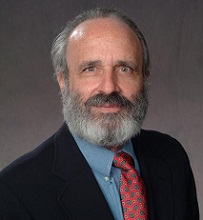 William A. Hyman
William A. Hyman
Professor Emeritus, Biomedical Engineering
Texas A&M University, w-hyman@tamu.edu
Read other articles by this author
The 21st Century Cures Act addressed what kinds of medical software are medical devices (and therefore subject to regulation by the FDA), and what kinds are not medical devices (and therefore not regulated by the FDA, but subject to CPSC and FTC). The theory here, if not the practice, in both law and regulations is that a balance should be found between protecting the public and overburdening software developers who might be bringing forth something useful. A subset of software that falls under the provisions of the Cures Act is Clinical Decision Support (CDS). PDS is a new category, Patient Decision Support, which addresses decision support software intended to be used by patients rather than healthcare professionals. The FDA created this category because the Cures Act expressly addresses software used by healthcare professionals. The FDA has issued a Draft Guidance on Clinical and Patient Decision Support Software (DG) which describes how the FDA proposes to implement the CDS provisions.
The language of the Cures Act can I think be fairly described as convoluted so the first task tackled by the DG is to explain what the FDA thinks it means. In summary CDS is not a medical device if it meets all of the following four requirements:
- Doesn’t involve processing images, or signals obtained from an in vitro diagnostic device, or from another signal acquisition system.
- Its intended use is displaying, analyzing, or printing medical information.
- Its intended use is for the purpose of supporting or providing recommendations to a health care professional about prevention, diagnosis, or treatment of a disease or condition.
- It allows for independent review of the basis for any recommendations and it is not the intent that a health care professional rely primarily on any such recommendations to make a clinical diagnosis or treatment decision regarding an individual patient.
So, a few things are clear. Image and signal processing software remain medical devices. In order to not be a medical device the primary end point must be providing information to the user rather than some form of automated response, and the clinical user must be able to see how the software reached its conclusions. The latter, as I have discussed here before, separates science or public guideline based CDS from machine learning CDS since a clinician cannot in general see the basis for a machine learning conclusion, other than knowing that the algorithm looked at a lot of data and your inputs match others it has seen, even though there is no explanation of the underlying basis. This always reminds me of a famous MIT physician/researcher who practiced at Boston City Hospital. I heard him explain that while at City he had made many important clinical decisions based on experience and intuition. As he crossed the bridge from Boston to Cambridge, returning to MIT, he would then realize that he had little scientific basis for the clinical decisions he had recently made. Or as he more colloquially put it, “at City I didn’t know what the hell I was doing”, but on the science side of the Charles River he would have to be able to explain his results.
PDS as noted is a new category, Patient Decision Support, which addresses decision support software intended to be used by patients rather than healthcare professionals. Such software continues to be potentially regulated as a medical device since it is not addressed in the Cures Act. According to the DG, the FDA proposes to use risk based regulatory discretion following the criteria outlined above.
Regulatory discretion includes the case where software is a medical device, but the FDA isn’t going to regulate it anyway.
The DG will undergo a 60-day comment period after which the FDA, using an unknown timeline, may do nothing, or it may release a “final” guidance with or without changes from the draft. Even when finalized, a guidance is nominally only a reflection of what the FDA was or maybe still is thinking about a subject, and it does not create regulations or in turn mandatory requirements. A great disclaimer sentence in this regard is that a guidance “is not binding on FDA or the public”, ie even the FDA doesn’t have to follow it.
